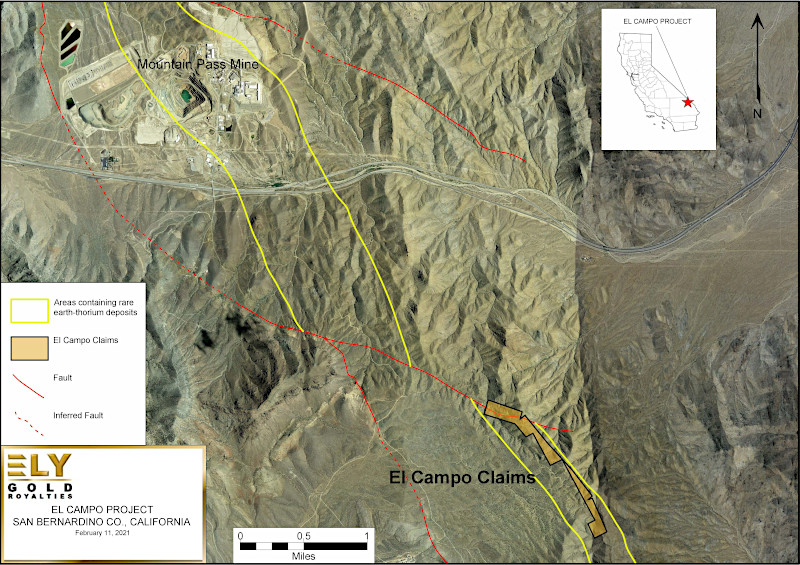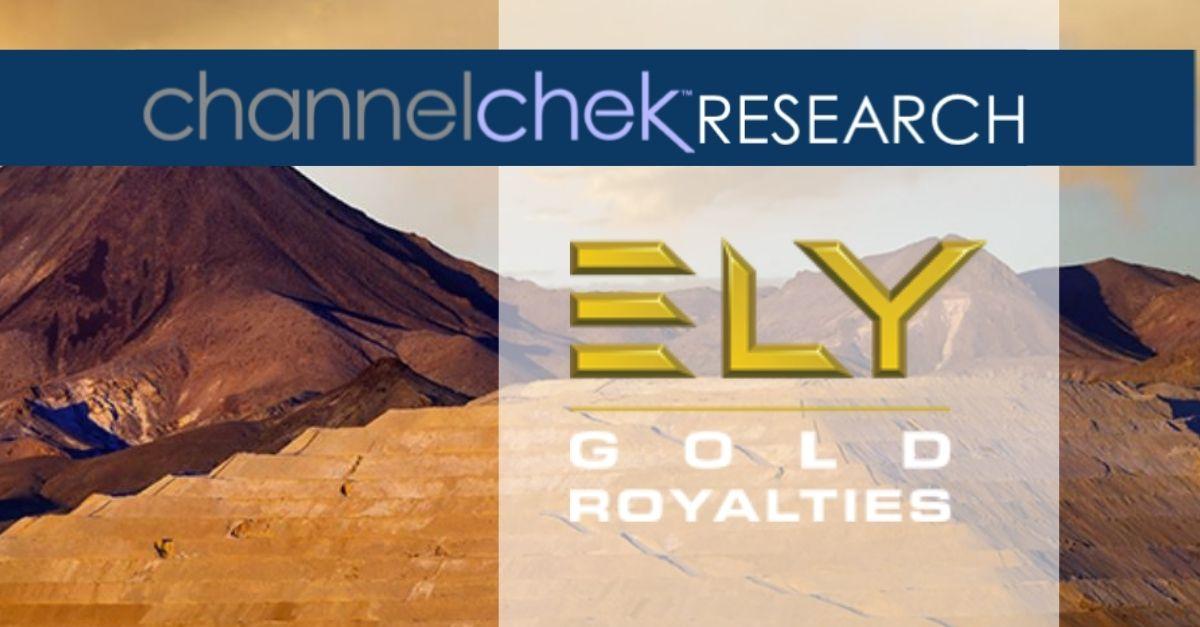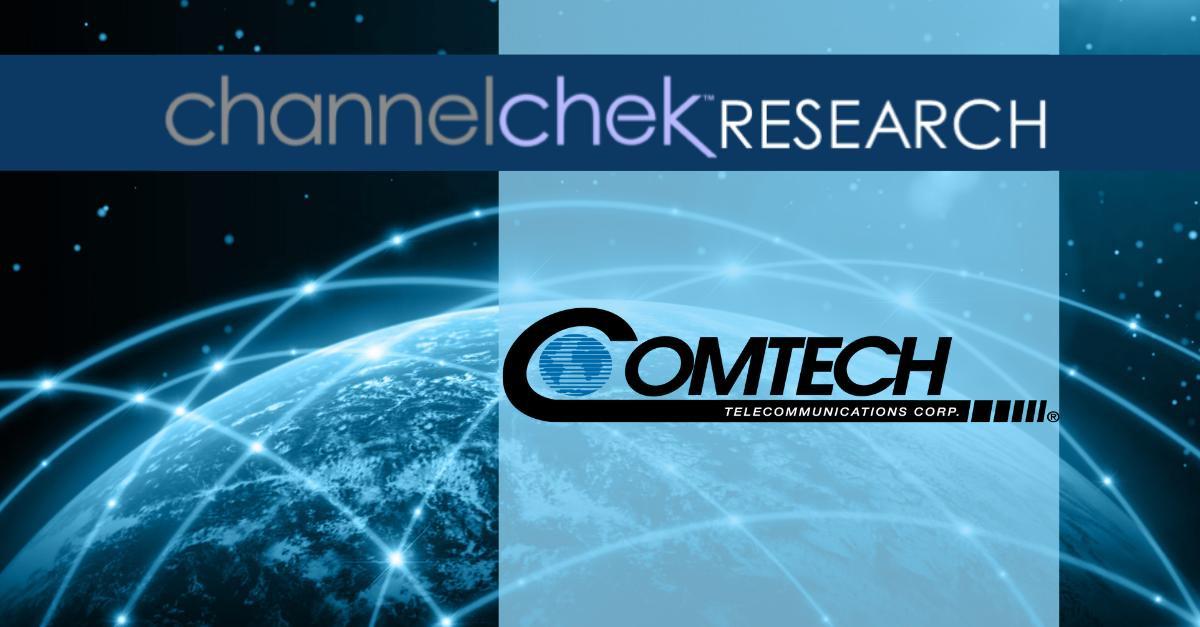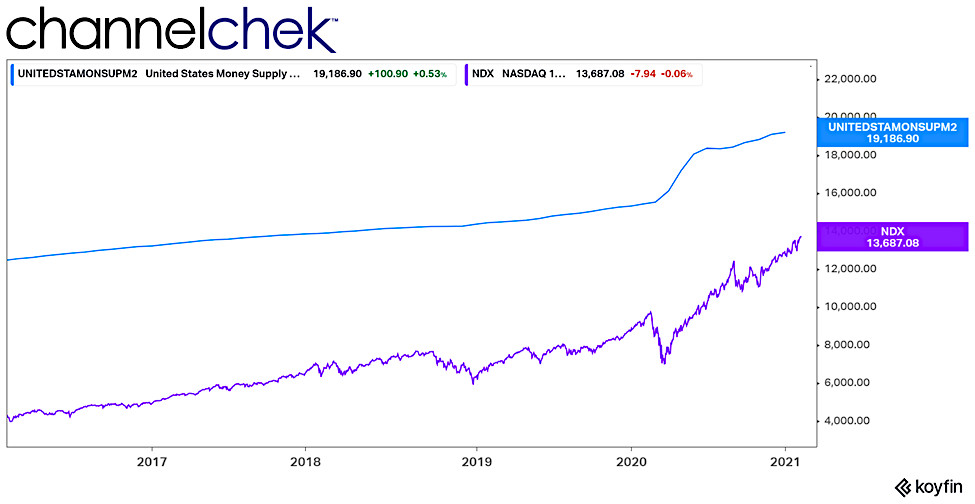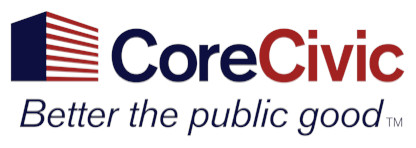
CoreCivic Reports Fourth Quarter and Full Year 2020 Results
BRENTWOOD, Tenn. – February 10, 2021 – CoreCivic, Inc. (NYSE: CXW) (the Company) announced today its financial results for the fourth quarter and full year 2020.
Financial Highlights – Full Year 2020
- Total revenue of $1.91 billion
- CoreCivic Safety revenue of $1.71 billion
- CoreCivic Community revenue of $106.0 million
- CoreCivic Properties revenue of $93.1 million
- Net income attributable to common stockholders of $54.2 million
- Diluted EPS per share of $0.45
- Adjusted diluted EPS of $1.32
- Normalized FFO per diluted share of $2.25
- Adjusted EBITDA of $404.8 million
- Non-cash impairment charges of $60.6 million
Damon T. Hininger, CoreCivic’s President and Chief Executive Officer, said, “While 2020 was an unprecedented and unpredictable year, we once again displayed the value of the mission-critical solutions we provide to our government partners and the durability of our cash flows. For the full year, we generated Normalized FFO per share of $2.25, only 4% below the mid-point of our guidance of $2.35 announced in February 2020, before the COVID-19 pandemic. In the fourth quarter we continued our capital allocation strategy of debt reduction by repaying more than $125 million in long-term debt, net of the change in cash, due to our strong operating cash flows and net proceeds provided by our recently announced sale of non-core government-leased real estate assets. We currently expect the sale of additional non-core assets, when combined with the sale completed in the fourth quarter of 2020, will result in aggregate net cash proceeds consistent with our original estimate of up to $150 million.
“Our achievements are only possible thanks to our dedicated professionals who continue to be on the front lines of the COVID-19 pandemic. Their dedication and diligence have been essential to meeting the needs of our government partners through a difficult period of time, and we continue to work tirelessly to protect our employees and the individuals in our care,” added Hininger.
CoreCivic is dedicated to helping those in its care be successful in their next step in life. Every day, CoreCivic’s chaplains, counselors and instructors help nearly 1,500 inmates learn the life and vocational skills they need to find and keep employment once released. Every year, its dedicated teachers help more than 1,500 inmates earn a GED, which research shows makes them 30% less likely to return to prison after they’re released. CoreCivic helps its government partners solve some of their toughest challenges by providing flexibility to manage constantly changing needs and populations and delivering on proven reentry programs that fight recidivism and change lives.
Financial Highlights – Fourth Quarter 2020
- Total revenue of $473.5 million
- CoreCivic Safety revenue of $424.3 million/li>
- CoreCivic Community revenue of $25.3 million
- CoreCivic Properties revenue of $23.8 million
- Net loss attributable to common stockholders of $26.8 million
- Diluted loss per share of $0.22
- Adjusted diluted EPS of $0.40
- Normalized FFO per diluted share of $0.63
- Adjusted EBITDA of $108.7 million
- Non-cash impairment charges of $47.6 million
Fourth Quarter 2020 Financial Results Compared With Fourth Quarter 2019
Net loss attributable to common stockholders in the fourth quarter of 2020 totaled $26.8 million, or $0.22 per diluted share, and was driven by $75.6 million, or $0.62 per share, of special items, compared with net income attributable to common stockholders generated in the fourth quarter of 2019 of $42.0 million, or $0.35 per diluted share. Adjusted for special items, net income in the fourth quarter of 2020 was $48.8 million, or $0.40 per diluted share (Adjusted Diluted EPS), compared with adjusted net income in the fourth quarter of 2019 of $42.8 million, or $0.36 per diluted share, a per share increase of 11.1%. Special items in the fourth quarter of 2020 included primarily $47.6 million in asset impairments, $7.1 million in expenses associated with debt repayments and refinancing transactions, $2.8 million in expenses associated with COVID-19, and $17.9 million in loss on sale of real estate assets. Special items in the fourth quarter of 2019 included $0.6 million in expenses associated with debt repayments and refinancing transactions and $0.2 million of expenses associated with mergers and acquisitions.
Funds From Operations (FFO) was $22.8 million, or $0.19 per diluted share, in the fourth quarter of 2020, compared to $69.0 million, or $0.58 per diluted share, in the fourth quarter of 2019. Normalized FFO, which excludes the special items described above, was $76.3 million, or $0.63 per diluted share, in the fourth quarter of 2020, compared with $69.8 million, or $0.59 per diluted share, in the fourth quarter of 2019, an increase in Normalized FFO per share of 6.8%.
EBITDA was $33.0 million in the fourth quarter of 2020, compared with $102.7 million in the fourth quarter of 2019. Adjusted EBITDA was $108.7 million in the fourth quarter of 2020, compared with $103.5 million in the fourth quarter of 2019, an increase of 5.0%. Adjusted EBITDA excludes the special items described above.
Adjusted financial results in the fourth quarter of 2020, compared with the fourth quarter of 2019, improved primarily because of incremental utilization under new contracts executed in 2019 and 2020 with (i) Immigration and Customs Enforcement (ICE) to activate our previously idle 910-bed Torrance County Detention Facility in New Mexico, (ii) ICE to utilize capacity at our 3,060-bed La Palma Correctional Center in Arizona, (iii) the U.S. Marshals Service (USMS) to utilize capacity at our 1,600-bed Cimarron Correctional Facility in Oklahoma, (iv) the states of Mississippi and Idaho to utilize available capacity at our 2,672-bed Tallahatchie County Correctional Facility in Mississippi and our 1,896-bed Saguaro Correctional Facility in Arizona. Financial results were also favorably impacted by lower general and administrative expenses in the fourth quarter of 2020 due to a reduction in incentive compensation.
The improved financial results were partially offset by lower utilization of our existing contracts with ICE and modest utilization declines across many of our state-level contracts due to the ongoing impact of COVID-19.
Balance Sheet and Liquidity as of December 31, 2020
As of December 31, 2020, cash on hand was $113.2 million, with an additional $566.2 million available under our revolving credit facility. Cash from operations and net proceeds from the sale of a portfolio of government-leased properties enabled us to repay $127.7 million of total debt during the fourth quarter of 2020, net of the change in cash and cash equivalents, increasing our financial flexibility. We have no material capital commitments, and no debt maturities until October 2022, when $250.0 million of 5.0% unsecured notes matures. We currently expect to repay these notes upon maturity with existing resources.
Recent Developments
On January 26, 2021, President Biden issued the Executive Order (EO) on Reforming Our Incarceration System to Eliminate the Use of Privately Operated Criminal Detention Facilities. The EO directs the Attorney General to not renew Department of Justice (DOJ) contracts with privately operated criminal detention facilities. Two agencies of the DOJ, the BOP and the USMS, utilize our services. The BOP houses inmates who have been convicted, and the USMS is generally responsible for detainees who are awaiting trial. The BOP has experienced a steady decline in inmate populations over the last seven years, a trend that has been accelerated by the COVID-19 pandemic. CoreCivic has one prison contract with the BOP, accounting for 2% of its total revenue for the year ended December 31, 2020, which was recently renewed through November 2022.
Commenting on the EO, Damon Hininger stated, “With nearly 70,000 fewer individuals in their system since its peak in 2013, the BOP’s need for prison capacity from the private sector has been reduced substantially. We are extremely proud of the critically important services we have provided to the BOP during their period of need extending for more than 20 years. Providing government agencies flexibility to manage fluctuations in their populations is one of the most important ways we provide value.” Hininger concluded, “We believe that our work is in alignment with the administration’s goals on equity. Our most recent ESG report shows we’re making real, measurable progress on our goals to expand proven reentry programs to fight recidivism and change lives – programs that help those in our care develop to their fullest potential and find success in their next step in life.”
Unlike the BOP, the USMS, does not own detention capacity and relies on the private sector, along with county jails, for their detainee population. We do not believe the USMS currently has sufficient detention capacity that satisfies their need without the private sector, and we are not currently aware of an alternative solution for the USMS. CoreCivic currently has eight detention facilities that have separate contracts where the USMS is the primary customer that all expire at various times over the next several years, with the exception of two contracts that have indefinite terms. For the year ended December 31, 2020, the USMS accounted for 21% of our total revenue.
Business Development Update
New Contract Award for the Development and Lease of Two Correctional Facilities for the State of Alabama. On February 1, 2021, we were awarded two new 30-year lease agreements with the Alabama Department of Corrections (ADOC) for the development of two correctional facilities, to be operated by the ADOC. Final lease costs for both properties will become available when project financing is completed. The two facilities will be the largest development projects in the Company’s history. We expect to finance 10%-15% of the project costs with existing resources, with the balance financed with non-recourse, project specific debt. Construction of both facilities, which will contain an aggregate of approximately 7,000 beds, is expected to commence later this year or the beginning of 2022. The two facilities are expected to be ready for occupancy once construction is completed in approximately three years. Both facilities will be leased, operated and staffed by the ADOC. CoreCivic will retain ownership and be responsible for facility maintenance throughout the term of the leases.
Commencement of New Management Contract with the Federal Bureau of Prisons for Reentry Services. On October 1, 2020, we were awarded a new contract by the Federal Bureau of Prisons for residential reentry and home confinement services at our 289-bed Turley Residential Center in Tulsa, Oklahoma and our 494-bed Oklahoma Reentry Opportunity Center in Oklahoma City, Oklahoma. As a result, we have recently reactivated the Turley Residential Center and began accepting residents at the facility and at the Oklahoma Reentry Opportunity Center under the new contract in February 2021. This contract supplements the existing contract with the state of Oklahoma at the Oklahoma Reentry Opportunity Center.
Sale of 42 Property Portfolio of Non-Core Government-Leased Properties. On December 23, 2020, we completed the sale of 42 non-core government-leased properties in a single transaction to a third party for an aggregate price of $106.5 million, generating net proceeds of $27.8 million after the repayment of non-recourse mortgage notes associated with some of the properties and other transaction-related costs. After considering tax protection payments required to be paid to the contributing partners of our wholly-owned subsidiary, Government Real Estate Solutions, LLC (GRES) in connection with the sale, we reported a net loss on this sale of $17.9 million. In connection with the sale, we also incurred a net debt defeasance charge of $7.1 million associated with the prepayment of the non-recourse mortgage notes. We intend to dissolve GRES in 2021, and currently expect to report a gain upon dissolution of the partnership reflected as an increase to stockholders’ equity of $15.0 million to $20.0 million, assuming we take no further actions that impact the partnership.
Assets Held for Sale. As of December 31, 2020, we had three additional non-core real estate assets held for sale with a net book value of $279.4 million. Although we can provide no assurance, based on interest expressed to-date, we are hopeful to consummate the sale of these assets during the first half of 2021. If we are successful in consummating the sale of these assets, combined with the sale completed in the fourth quarter of 2020, we expect the net proceeds from our sale of non-core assets will be consistent with our original estimate of up to $150 million.
Goodwill Impairment of Community Segment. In connection with our annual impairment test for the goodwill associated with the Community reporting unit, during the fourth quarter of 2020, we performed a quantitative goodwill impairment test and concluded to record an impairment charge of $42.6 million, representing the full value of goodwill allocated to this reporting unit. Our analysis considered numerous factors, with the impairment predominantly driven by our consideration of the broad-based declines in the market capitalization of publicly-traded companies in our industry, primarily during the second half of 2020, which is an indicator of fair value under ASU 2017-04, “Intangibles-Goodwill and Other (Topic 350): Simplifying the Test of Goodwill Impairment”. Our analysis also considered the reduction in cash flows from the COVID-19 pandemic and the anticipated change in tax structure effective January 1, 2021. We believe the cash flows in this segment will improve once effects of the pandemic subside, and remain committed to this segment, which focuses on helping those entrusted to our care obtain employment and successfully reintegrate into their communities. This segment serves a critical need to parolees, defendants, and offenders who are serving their full sentence, the last portion of their sentence, waiting to be sentenced, awaiting trial while supervised in a community environment, or as an alternative to incarceration.
Financial Guidance
At this time we are not providing 2021 financial guidance because of uncertainties associated with COVID-19, as well as uncertainties associated with the application of the administration’s various executive orders related to immigration and criminal justice. We do not expect to provide financial guidance until we have further clarity around these uncertainties. Our business is very durable, and continues to generate cash flow even during these unprecedented disruptions to the economy and criminal justice system. This resiliency is due to the essential nature of our facilities and services in our Safety and Community segments, further enhanced by the diversification and stability of our Properties segment, all supported by payments from highly rated federal, state, and local government agencies.
Supplemental Financial Information and Investor Presentations
We have made available on our website supplemental financial information and other data for the fourth quarter of 2020. Interested parties may access this information through our website at http://ir.corecivic.com/ under “Financial Information” of the Investors section. We do not undertake any obligation, and disclaim any duties to update any of the information disclosed in this report.
Management may meet with investors from time to time during the first quarter of 2021. Written materials used in the investor presentations will also be available on our website beginning on or about March 1, 2021. Interested parties may access this information through our website at http://ir.corecivic.com/ under “Events & Presentations” of the Investors section.
Conference Call, Webcast and Replay Information
We will host a webcast conference call at 10:00 a.m. Central Time (11:00 a.m. Eastern Time) on Thursday, February 11, 2021, to discuss our fourth quarter and full year 2020 financial results and business outlook. Interested parties may access this information through our website at http://ir.corecivic.com/ under “Events & Presentations” of the Investors page. The live broadcast can also be accessed by dialing 800-367-2403 in the U.S. and Canada, including the confirmation passcode 3061661. The conference call will be archived on our website following the completion of the call. In addition, there will be a telephonic replay available beginning at 1:00 p.m. central time (2:00 p.m. eastern time) on February 11, 2021, through 1:00 p.m. central time (2:00 p.m. eastern time) on February 19, 2021. To access the telephonic replay, dial 888-203-1112 in the U.S. and Canada. International callers may dial +1 719-457-0820 and enter passcode 3061661.
About CoreCivic
The Company is a diversified government solutions company with the scale and experience needed to solve tough government challenges in flexible, cost-effective ways. We provide a broad range of solutions to government partners that serve the public good through corrections and detention management, a network of residential reentry centers to help address America’s recidivism crisis, and government real estate solutions. We are the nation’s largest owner of partnership correctional, detention and residential reentry facilities, and believe we are the largest private owner of real estate used by U.S. government agencies. The Company has been a flexible and dependable partner for government for more than 35 years. Our employees are driven by a deep sense of service, high standards of professionalism and a responsibility to help government better the public good. Learn more at www.corecivic.com.
Forward-Looking Statements
This press release contains statements as to our beliefs and expectations of the outcome of future events that are “forward-looking” statements within the meaning of Section 21E of the Securities Exchange Act of 1934, as amended, and the Private Securities Litigation Reform Act of 1995. These forward-looking statements are subject to risks and uncertainties that could cause actual results to differ materially from the statements made. These include, but are not limited to, the risks and uncertainties associated with: (i) changes in government policy (including the DOJ not renewing contracts as a result of the EO), legislation and regulations that affect utilization of the private sector for corrections, detention, and residential reentry services, in general, or our business, in particular, including, but not limited to, the continued utilization of our correctional and detention facilities by the federal government, and the impact of any changes to immigration reform and sentencing laws (our company does not, under longstanding policy, lobby for or against policies or legislation that would determine the basis for, or duration of, an individual’s incarceration or detention); (ii) our ability to obtain and maintain correctional, detention, and residential reentry facility management contracts because of reasons including, but not limited to, sufficient governmental appropriations, contract compliance, negative publicity and effects of inmate disturbances; (iii) changes in the privatization of the corrections and detention industry, the acceptance of our services, the timing of the opening of new facilities and the commencement of new management contracts (including the extent and pace at which new contracts are utilized), as well as our ability to utilize available beds; (iv) general economic and market conditions, including, but not limited to, the impact governmental budgets can have on our contract renewals and renegotiations, per diem rates, and occupancy; (v) fluctuations in our operating results because of, among other things, changes in occupancy levels, competition, contract renegotiations or terminations, increases in costs of operations, fluctuations in interest rates and risks of operations; (vi) the duration of the federal government’s denial of entry at the United States southern border to asylum-seekers and anyone crossing the southern border without proper documentation or authority in an effort to contain the spread of COVID-19; (vii) government and staff responses to staff or residents testing positive for COVID-19 within public and private correctional, detention and reentry facilities, including the facilities we operate; (viii) the location and duration of shelter in place orders and other restrictions associated with COVID-19 that disrupt the criminal justice system, along with government policies on prosecutions and newly ordered legal restrictions that affect the number of people placed in correctional, detention, and reentry facilities; (ix) whether revoking our REIT election, effective January 1, 2021, and our revised capital allocation strategy can be implemented in a cost effective manner that provides the expected benefits, including facilitating our planned debt reduction initiative and planned return of capital to shareholders; (x) our ability to identify and consummate the sale of additional non-core assets at attractive prices; (xi) our ability to successfully identify and consummate future development and acquisition opportunities and our ability to successfully integrate the operations of our completed acquisitions and realize projected returns resulting therefrom; (xii) increases in costs to develop or expand real estate properties that exceed original estimates, or the inability to complete such projects on schedule as a result of various factors, many of which are beyond our control, such as the effects of, and delays caused by, COVID-19, weather, the availability of labor and materials, labor conditions, delays in obtaining legal approvals, unforeseen engineering, archeological or environmental problems, and cost inflation, resulting in increased construction costs; (xiii) our ability to identify and initiate service opportunities that were unavailable under our former REIT structure; (xiv) our ability to have met and maintained qualification for taxation as a REIT for the years we elected REIT status; and (xv) the availability of debt and equity financing on terms that are favorable to us, or at all. Other factors that could cause operating and financial results to differ are described in the filings we make from time to time with the Securities and Exchange Commission.
CoreCivic takes no responsibility for updating the information contained in this press release following the date hereof to reflect events or circumstances occurring after the date hereof or the occurrence of unanticipated events or for any changes or modifications made to this press release or the information contained herein by any third-parties, including, but not limited to, any wire or internet services.
Contact:
Investors: Cameron Hopewell
Managing Director, Investor Relations
(615) 263-3024
Financial Media: David Gutierrez
Dresner Corporate Services
(312) 780-7204
SOURCE: CoreCivic






